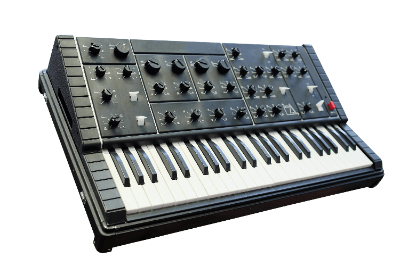What Is a Synthesizer?
 A synthesizer is a device that uses electronic circuitry to generate sound.
A synthesizer is a device that uses electronic circuitry to generate sound.
Synthesizers, as they are commonly known, are keyboard-shaped and are used as musical instruments. However, there are also keyboard-less synthesizers and software synthesizers that are used on computers.
These are also used as compositional instruments. Synthesizers are ideal for sound creation because they can artificially create and synthesize a variety of tones.
Uses of Synthesizers
Synthesizers are widely used as musical instruments and as software for composing music. Because the sounds produced by synthesizers are electronic, they are often used in electronic music. Some Synthesizers are also used as transmitter circuits in the field of wireless communications.
Principle of Synthesizers
Synthesizers are devices that use electronic circuits to synthesize sound. Therefore, its internal structure is composed of electronic circuits.
First, the sound picked up by the microphone is filtered to remove the upper and lower frequencies. The frequencies to be removed can be set arbitrarily.
The filtered sound is then subjected to an effect, such as an overtone addition or delay, if necessary. The effect-added sound is amplified by the speaker and output.
Synthesizers are available with analog circuitry or software. In the case of software, the above is processed on a computer board.
Other Information on Synthesizers
1. Frequency Synthesizer
Synthesizers are generally used for music, but frequency synthesizers have a distinctive use. Frequency synthesizers are characterized by their use as oscillators in communication equipment by synthesizing frequencies.
An oscillator is a device that continuously generates oscillations of a certain frequency. It is also used as a filter to remove certain frequencies. Frequency synthesizers can be used for a variety of frequencies and are a widely used technology in the communications field.
Frequency synthesizers can be divided into two main types based on their different principles.
PLL Synthesizer
This is the most common type of frequency synthesizer and uses a phase-locked loop circuit (PLL circuit). The input signal is passed through a phase comparator, low-pass filter, and voltage-controlled oscillator before being output, enabling a single crystal oscillator to generate a highly stable frequency.
DDS Synthesizer
DDS Synthesizers are also called Digital Direct Synthesizers. They are a synthesizer that rewrites an analog signal into digital data and outputs it again as an analog signal. By passing it through an adder and a latch, the set frequency values are accumulated to create digital data. The waveform is directly extracted by D/A conversion.
Since analog waveforms are extracted by a digital method, it is highly accurate and low cost. In addition, since the frequency and phase can be changed instantly, it is being considered as an alternative to PLL.
2. History of Synthesizers
Synthesizers have existed for more than 100 years and have been repeatedly improved to their current form.
- 1930s
A simple electronic instrument is born. This is the origin of the Synthesizer. - 1937s
Harald Bode of Germany invented the polyphonic synthesizer, which greatly influenced the development of analog synthesizers. - 1950s
Computer music was played for the first time in the world, and programs were developed to process digital signals. - 1956s
The word synthesizer appeared for the first time in history. - 1960s
Analog synthesizers became popular throughout the world. - 1970s
With the development of electronics, computer-based digital synthesizers were born. - 1980s
Digital instruments became available to the general public, and the MIDI standard was born, allowing different manufacturers to connect to each other. - 1990s
Software sound generators became commonly available.
Further evolution continues to this day, with higher performance and lower prices.
3. Differences Between Synthesizers and Electronic Organs
Synthesizers and electronic organs both have multiple rows of keys. They produce a wide variety of sounds and have some similarities in both appearance and content, but there are also differences. The electronic organ is intended to be played by a single person.
There are approximately 70 keys on the upper and lower keyboard and one or two octaves of pedals. If even these keys are not enough, a machine is used to change the pitch of the notes. In addition, electronic organs are easy to control and can be played with great power by a single person.
Synthesizers, on the other hand, are intended to synthesize various sounds by manipulating parameters. While the output sound of an electronic organ is constant, a synthesizer can create a variety of tones by manipulating waveforms.